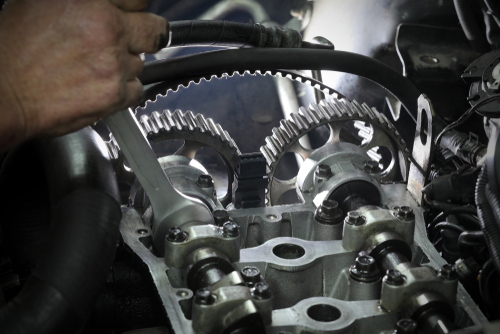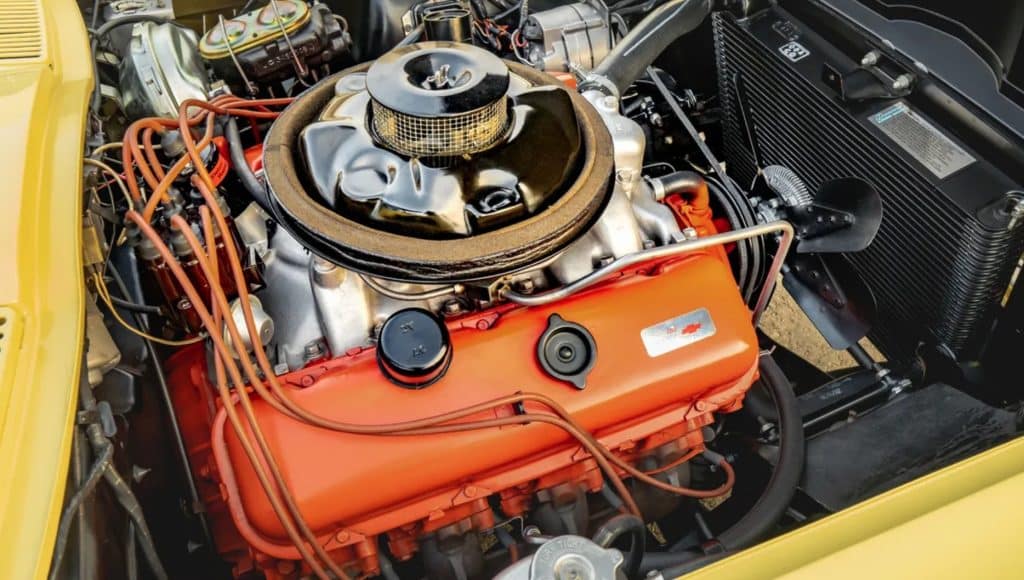Is your car refusing to start? It’s not always a dead battery or an empty gas tank. Sometimes, those tiny electronic tattletales called sensors can be the culprits.
These little gadgets keep your car’s brain (the Engine Control Unit) informed about what’s happening under the hood.

Several sensors can prevent your car from starting, including the crankshaft position sensor, mass airflow sensor, and camshaft sensor.
When these sensors malfunction, they send incorrect data to the ECU, which may decide it’s safer to keep your car in park.
It’s like your car is giving you the silent treatment because it’s getting mixed signals.
Don’t worry, though. Understanding which sensors might be causing trouble can save you time and money at the mechanic. Plus, it’ll give you some impressive car talk for your next dinner party.
So, let’s pop the hood and take a closer look at these crucial components that could be turning your morning commute into an unexpected staycation.
Key Takeaways
- Faulty sensors can prevent your car from starting by sending incorrect data to the Engine Control Unit
- Common culprits include the crankshaft position sensor, mass airflow sensor, and camshaft sensor
- Proper diagnosis and maintenance of these sensors can improve your car’s reliability and performance
Understanding Car Start Failure
When your car won’t start, it can really ruin your day. Let’s take a look at how those pesky sensors can throw a wrench in your engine’s works and some common culprits behind those frustrating no-start situations.
Role of Sensors in Engine Operation
Your car’s engine is like a finely tuned orchestra, and sensors are the conductors keeping everything in harmony.
The crankshaft position sensor tells your engine control unit when to fire the spark plugs.
Without it, your engine’s timing would be as off as your uncle’s dancing at weddings.
The mass air flow sensor measures the air entering your engine, helping maintain the perfect air-fuel mixture.
It’s like the bartender of your engine, making sure your cocktail of combustion is just right.
Fuel pressure and throttle position sensors work together to ensure your engine gets the right amount of fuel at the right time.
Think of them as the wait staff at a fancy restaurant, making sure your engine’s plates are never empty.
Common Causes of Start Failure
A dead battery is often the culprit behind a no-start situation. It’s like trying to wake up without your morning coffee – nothing’s happening without that jolt of energy.
Faulty sensors can trick your engine control unit into thinking something’s wrong.
For example, the crankshaft position sensor might have your car thinking it’s in a different position than it actually is. It’s like your GPS telling you you’re in Timbuktu when you’re actually in your driveway.
Fuel delivery issues can also leave you stranded. A bad fuel pump or clogged fuel injectors are like having a kink in your garden hose – nothing’s getting through to where it needs to go.
Don’t forget about those spark plugs! Fouled plugs can’t create the spark needed for combustion.
It’s like trying to light a campfire with wet matches – you’ll be sitting in the dark.
Critical Sensors That Affect Starting

Several key sensors play a crucial role in your car’s starting process. When these little electronic tattletales go on the fritz, you might find yourself stranded in your driveway, frantically googling “why won’t my car start?” on your phone.
The Crankshaft and Camshaft Position Sensors
Your engine’s crankshaft and camshaft position sensors are like the conductor of an orchestra, keeping everything in perfect harmony.
The crankshaft position sensor tells your car’s brain (the engine control module) when to fire the spark plugs and inject fuel.
If this sensor goes kaput, your car might crank but never start. It’s like trying to conduct an orchestra blindfolded – not gonna happen!
The camshaft position sensor works hand-in-hand with its crankshaft buddy. It helps your car’s computer determine the position of the valves, ensuring proper combustion timing.
When this sensor fails, your car might start but run about as smoothly as a washing machine full of bowling balls.
Evaluating Fuel and Airflow Sensors
Your car’s engine is a picky eater. It needs just the right mix of fuel and air to run properly.
The mass airflow (MAF) sensor measures the amount of air entering the engine.
If it’s not working correctly, your car might flood the engine with too much fuel or starve it.
The oxygen sensor, on the other hand, monitors your car’s exhaust to ensure the air-fuel mixture is just right.
A faulty O2 sensor can lead to poor fuel economy and even prevent your car from starting.
Don’t forget about those fuel injectors! While not sensors themselves, they rely on sensor data to function.
If they’re clogged or malfunctioning, your engine might crank but never catch.
Troubleshooting the ECU and Associated Sensors

When your car won’t start, it’s like trying to wake up a teenager on a Saturday morning. The culprit could be lurking in your Engine Control Unit (ECU) or its network of sensors.
Let’s pop the hood and take a look.
ECU Failures and Malfunctions
Your car’s ECU is like the brain of a finicky robot. When it throws a tantrum, your engine might decide to take an unscheduled nap.
ECU problems can range from minor hiccups to full-blown meltdowns.
If your check engine light is flashing like a disco ball, it’s time to plug in that diagnostic tool. Those pesky trouble codes might reveal an ECU having an identity crisis.
Sometimes, a simple reset can work wonders – like rebooting your grandma’s computer.
But if your ECU is truly fried, you might be in for a pricey replacement.
Don’t worry, though – it’s still cheaper than sending your kid to college!
Sensor Malfunction Indicators
Your car’s sensors are like overzealous hall monitors, always tattling to the ECU. When they start fibbing, your engine might throw in the towel and refuse to start.
Keep an eye out for these telltale signs:
- Your engine struggles to idle like it’s had one too many oil shots
- The check engine light won’t stop winking at you
- Your car’s performance is as sluggish as a sloth on vacation
Common troublemakers include the crankshaft position sensor, mass airflow sensor, and oxygen sensor. These little tattletales can cause big headaches if they decide to play hooky.
Remember, your car’s computer is only as smart as the information it receives. So if a sensor goes rogue, your ECU might just throw up its digital hands and call it quits.
Additional Sensors Influencing Engine Start

Beyond the basics, several other sensors play crucial roles in getting your car started. These often-overlooked components monitor critical factors like temperature and pressure, ensuring your engine fires up smoothly every time.
Temperature and Pressure Sensors
You might not think about it, but your car’s engine coolant temperature sensor is a real unsung hero.
This little gadget keeps tabs on your engine’s temperature, making sure it’s not too hot or too cold to start.
If it’s on the fritz, your car might think it’s freezing outside even on a balmy day.
That could lead to some serious fuel-wasting as it tries to warm up an already toasty engine.
Don’t forget about the oil pressure sensor either. It’s like your engine’s blood pressure monitor.
If it falsely reports low pressure, your car might refuse to start to protect itself from damage.
Monitoring with Manifold Absolute Pressure Sensors
Now, let’s talk about the manifold absolute pressure (MAP) sensor.
This little gizmo is like a meteorologist for your engine, measuring air pressure in the intake manifold.
If your MAP sensor goes haywire, your car’s computer might think it’s trying to start on top of Mount Everest.
That can lead to all sorts of starting troubles and fuel efficiency nightmares.
And while we’re on the subject of pressure, don’t overlook the fuel pressure sensor. It ensures your engine gets just the right amount of go-juice.
Too little pressure, and your car might sputter like it’s had one too many at the mechanic’s Christmas party.
Frequently Asked Questions
Car troubles can be frustrating, especially when your vehicle refuses to start. Let’s explore some common questions about those pesky sensors that might be giving you a headache.
Why would a car crank but refuse to come to life?
You turn the key, hear the engine crank, but nothing happens. It’s like your car is playing a cruel joke on you.
Often, this can be due to a faulty crankshaft or camshaft position sensor.
These little gadgets tell your engine when to fire the spark plugs. Without them, your car’s just spinning its wheels, so to speak.
What mischievous little sensor could keep my car from starting?
There’s a whole gang of sensors that could be causing trouble.
The usual suspects include the oxygen sensor, mass air flow sensor, and throttle position sensor.
Think of them as the tattletales of your engine, constantly reporting back to the computer. When one goes rogue, your car might decide to go on strike.
Could a fused fuse be the culprit behind a car’s stubborn refusal to start?
Ah, the humble fuse. It’s not technically a sensor, but it can certainly cause similar headaches.
Check your fuse box – you might find a blown fuse cutting off power to a crucial component.
It’s like finding out your party got canceled because someone forgot to pay the electric bill.
Is there a way to coax a crankshaft position sensor into letting my car start?
Unfortunately, you can’t sweet-talk a faulty sensor into working. If your crankshaft position sensor is on the fritz, your best bet is to replace it.
It’s like trying to navigate with a broken compass – you’re not going anywhere until you fix it.
Does anyone know which sensor acts as the bouncer, denying my car’s engine entry to the start club?
The oil pressure sensor can be quite the party pooper. On some models, it can prevent your car from starting if it’s not working correctly.
It’s like your car’s overprotective parent, refusing to let it go out if it thinks something’s amiss.
When there’s power but the engine’s silent, what’s the secret to getting it to sing?
If you’ve got power but no vroom, you might be dealing with a rebellious mass air flow sensor. This sensor measures the amount of air entering your engine. When it goes haywire, your car might start for a split second before stalling.
It’s like your engine’s trying to sing but keeps forgetting the lyrics.
